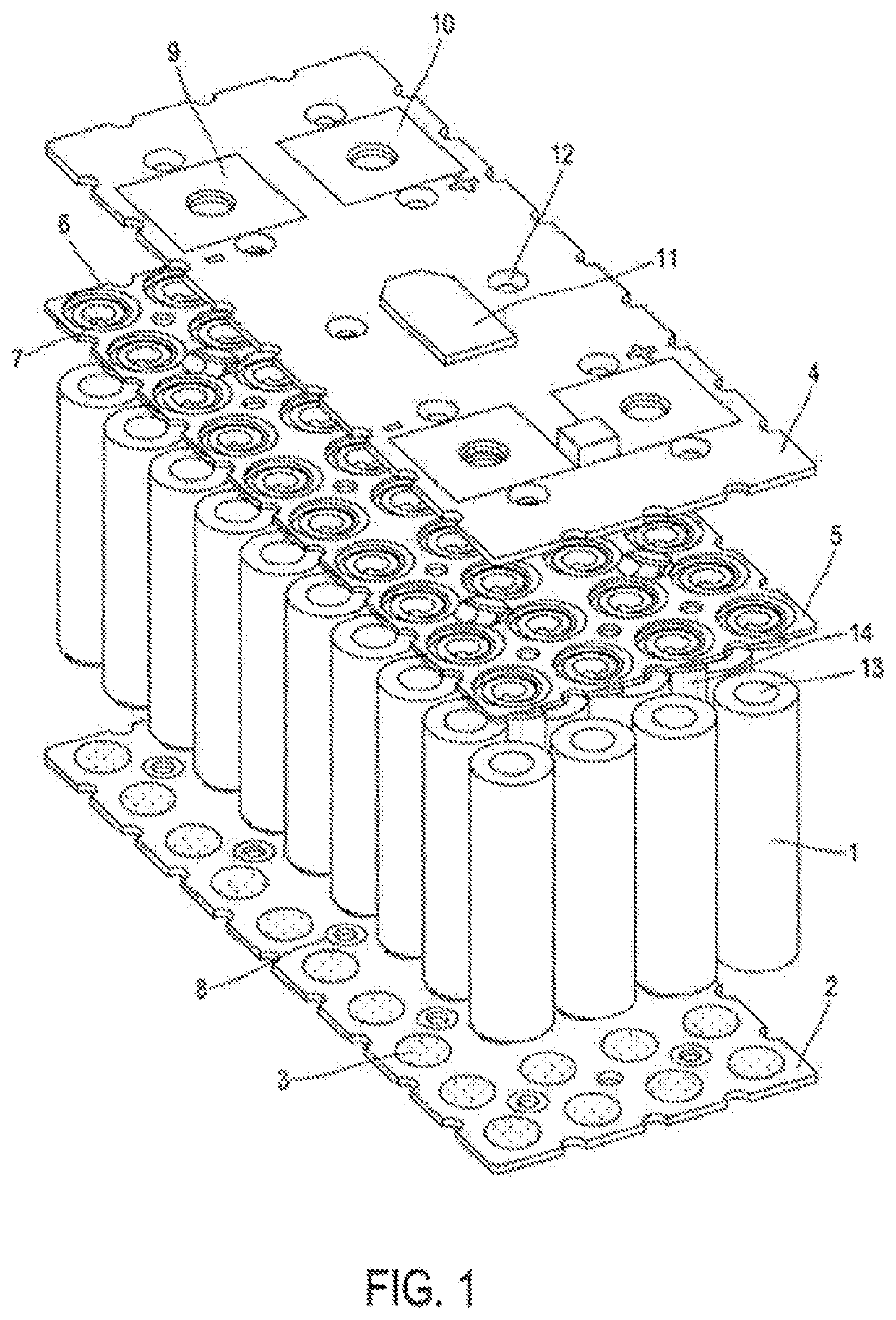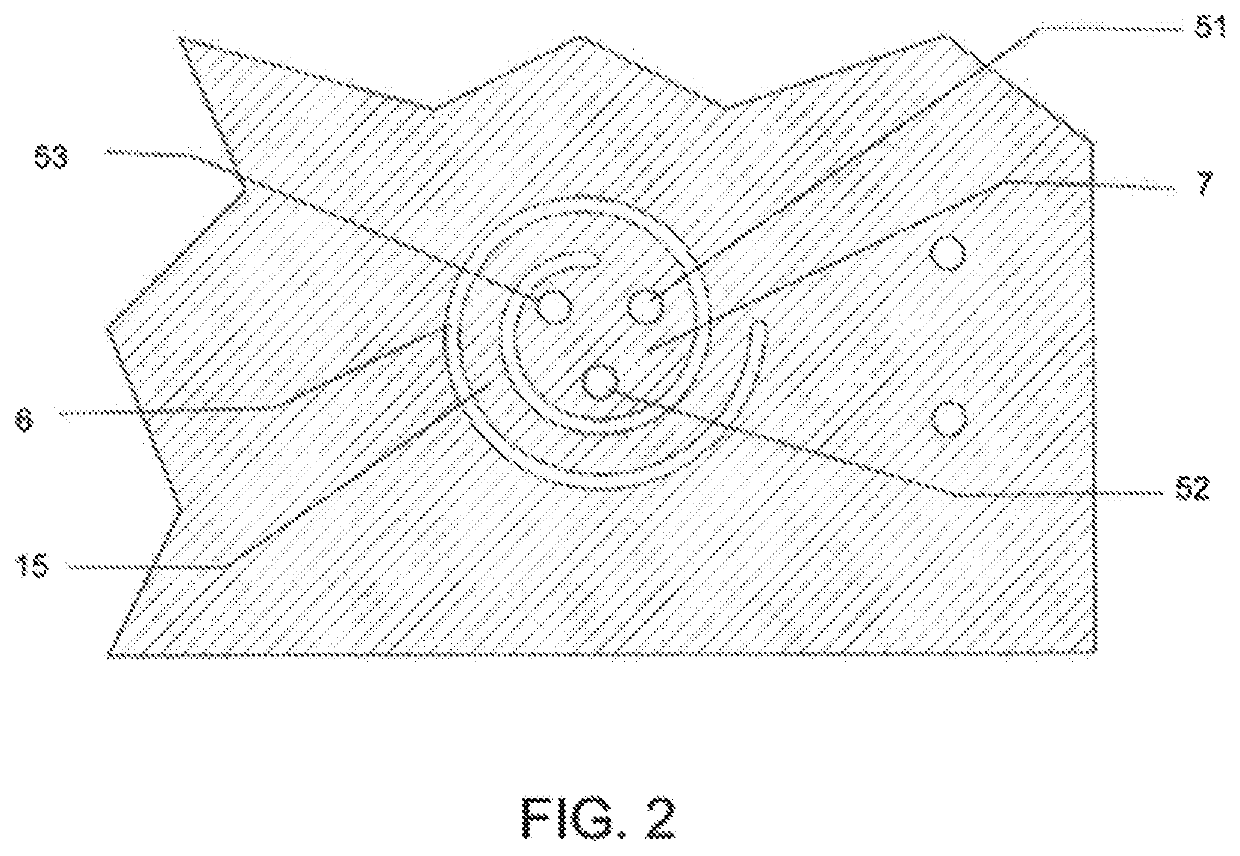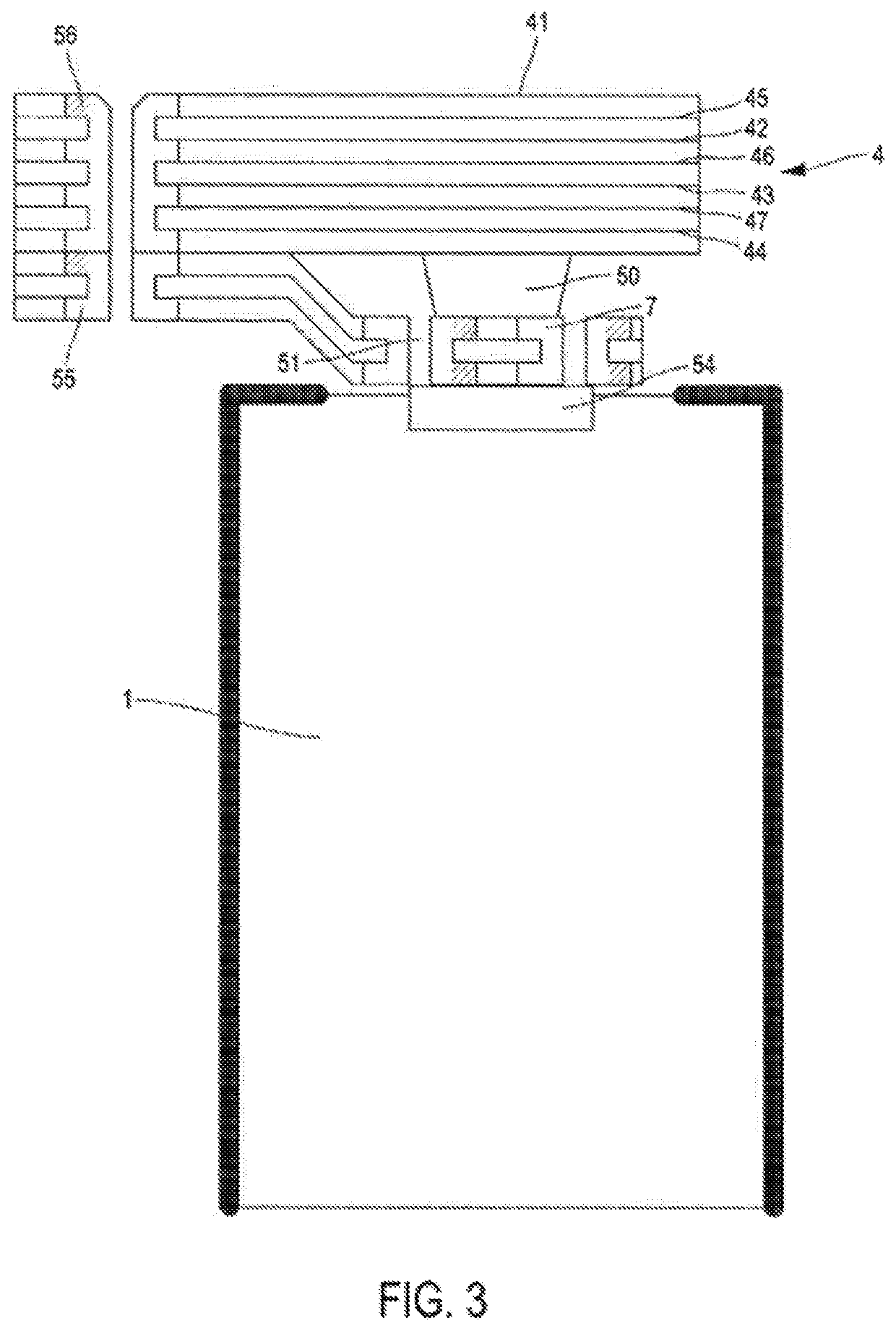Power unit made up of a solder-free assembly of a plurality of battery cells
a power unit and battery cell technology, applied in the field of power units, can solve the problems of low unit energy content, large and costly assemblies, and laborious assembly of such batteries, and achieve the effect of improving electrical connections
- Summary
- Abstract
- Description
- Claims
- Application Information
AI Technical Summary
Benefits of technology
Problems solved by technology
Method used
Image
Examples
Embodiment Construction
[0069]General description of the power unit
[0070]The power unit shown in FIG. 1 and FIG. 4 includes:[0071]a set of battery cells (1) all oriented parallel to each other and in the same direction, with the metal cap forming the positive pole facing upwards and aligned to form a matrix of N rows and M columns;[0072]a bottom printed circuit (2), the top conductive surface (3) of which ensures the connection with the bottom metal cap constituting the negative pole of the batteries;[0073]a top printed circuit (4), the bottom surface of which ensures the connection, via an intermediate element (5), with the top metal cap constituting the positive pole of the batteries;[0074]an intermediate element (5) having cutouts (6) defining contact surfaces (7) ensuring the electrical and mechanical connection with the cap of the corresponding cell (1).
[0075]Detailed description of the bottom printed circuit (2)
[0076]The bottom printed circuit (2) has a number of functions:
[0077]A—it ensures the mech...
PUM
| Property | Measurement | Unit |
|---|---|---|
| diameter | aaaaa | aaaaa |
| length | aaaaa | aaaaa |
| length | aaaaa | aaaaa |
Abstract
Description
Claims
Application Information
 Login to View More
Login to View More - R&D
- Intellectual Property
- Life Sciences
- Materials
- Tech Scout
- Unparalleled Data Quality
- Higher Quality Content
- 60% Fewer Hallucinations
Browse by: Latest US Patents, China's latest patents, Technical Efficacy Thesaurus, Application Domain, Technology Topic, Popular Technical Reports.
© 2025 PatSnap. All rights reserved.Legal|Privacy policy|Modern Slavery Act Transparency Statement|Sitemap|About US| Contact US: help@patsnap.com



